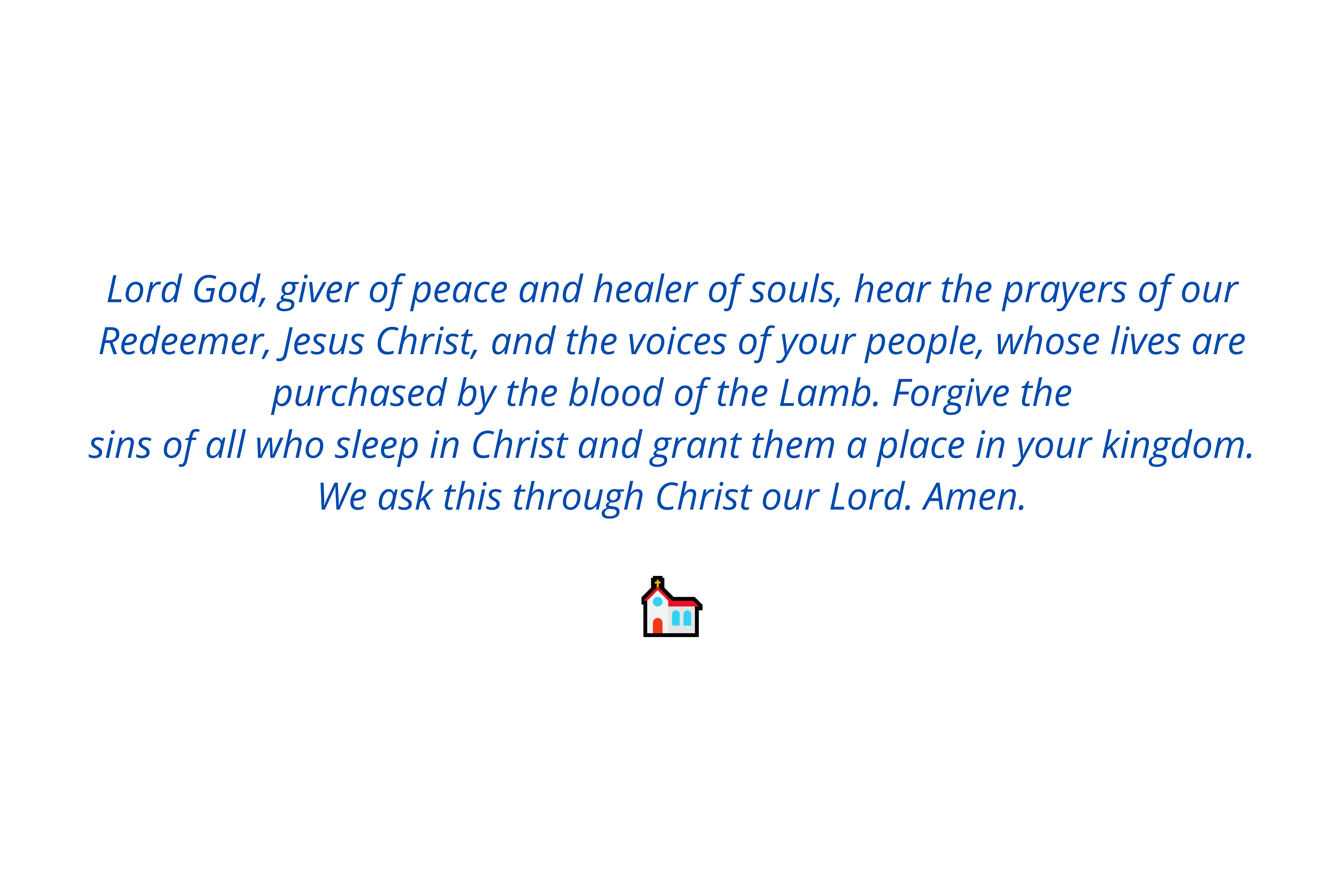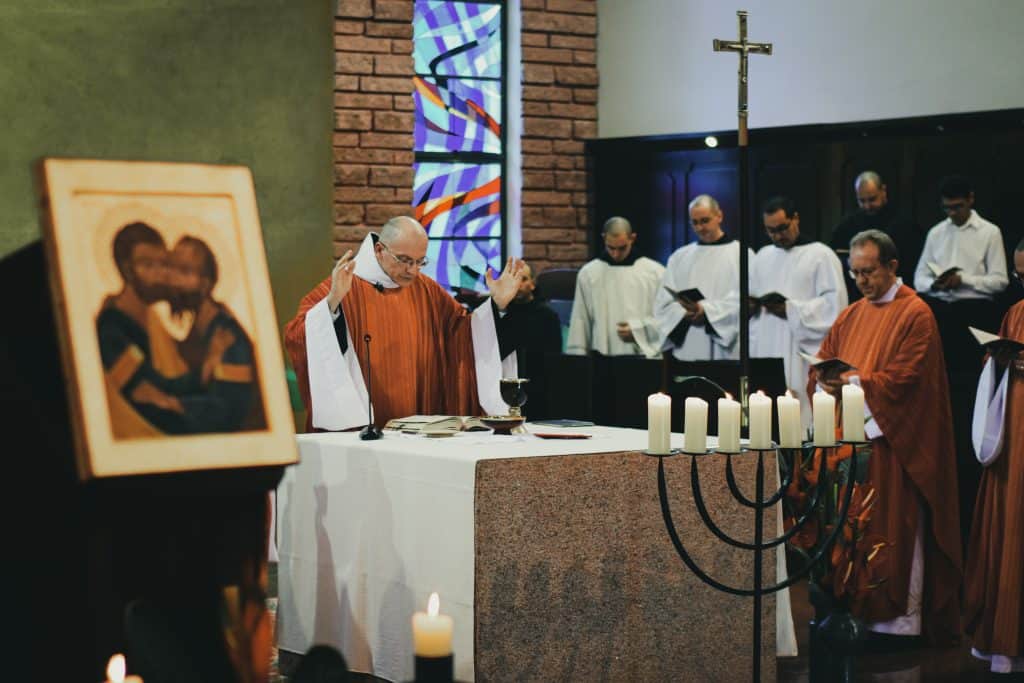While the pattern of prayer has changed considerably throughout the history of Christianity, Prayers of the Faithful remain a deeply important part of the spiritual connection believers have with Jesus Christ and our Lord in heaven.
The Prayers of the Faithful are some of the oldest prayers in the Christian and Catholic faith, forming a bedrock of Catholic liturgy that continues to support the faith of people worldwide. Sometimes described by other names – including general intercessions, or petitions, or even universal prayers – the Prayers of the Faithful are always part of the liturgy of the word shared with the faithful before the first reading.
It can be easy for Catholics to think of the Prayers of the Faithful as a bit of a funnel, starting with prayers for those around our world that we may not know personally, groups of people that may be suffering real hardships, and individuals on the planet that we may never have an opportunity to know individually but that we still embrace and care about as Christians.
From there, our prayers get more and more specific as we include groups that are closer to us and our communities. These prayers go out to those that we care about deeply and personally, issues that we want to have resolved in our own lives, and issues that are challenging our fellow community members and parishioners.
At the conclusion of these intercessions, we are then asked to pray for the things we hold most dear to ourselves, silently and in our hearts, speaking directly to God and communing with Him only after we have prayed for everyone else.
It is in these moments that Catholics often feel closest to God, celebrating our faith and bringing our communities together in the power of prayer in such a way that allows good to flow from us and through us.
The Fundamentals of Prayers of the Faithful
While individual Prayers of the Faithful will always be unique and distinct by their very nature, particularly as you move through the prayers that begin more general and conclude very intimate and very personal, the Roman Missal does provide for some guidelines that should be followed as strictly as possible.
For starters, the Church intends that the Prayers of the Faithful begin addressing the needs of the Church.
This is not intended to be strictly for the specific church that parishioners are intending but the Church in general, allowing for the collective Prayers of the Faithful for all assembled worldwide to come together and ask God that he continue to shine his light on each and every Christian.
Secondly, the Roman Missal intends for these prayers to include the salvation of the world and all souls globally, Christian or otherwise.
These directives also asked that we specifically highlight figures of authority, servants of the public good, and those that are willing to risk life and limb to make sure that we are able to lead better, happier, healthier lives under the blanket of service that they willingly provide.
Thirdly, this form of prayer should focus on those among us that are dealing with difficulties, challenges, and burdens that they are facing.
It is the intention of these prayers to help those in our parish, to help those of the faith, and to assist those in our lives that are looking to lead happy, healthy, faith-filled lives but having a difficult time doing so for one reason or another.
Lastly, these intercessions and petitions should include prayers for our local community so that it may be filled with peace, serenity, and prosperity as He wills it.
These prayers are almost always offered by deacons of the church or a lector, though they may also be offered by a faithful member of the congregation or a cantor. Priests can also give the Prayers of the Faithful, something that happens most commonly during weekday mass in Catholic churches around the world.
Those charged with delivering these petitions are asked to do so in a straightforward, dignified, and respectful way without a lot of expressions. These prayers are best delivered with a natural, upbeat, and reverent tone to the congregation.

Catholic Mass
As highlighted above, the prayers that are given to each individual congregation are going to be different and distinct from any other, though they will share obvious similarities.
Most Prayers of the Faithful given during Catholic mass are going to follow a similar “three-step” structure, a structure that goes as follows below.
This prayer begins with a brief introduction, almost always delivered by the individual presiding over the congregation. This introduction is intended to invite the congregation to pray together, at which point in time the individual presenting the Prayers of the Faithful will then begin their reading.
At the conclusion of these petitions and oration is given by the individual presiding over the congregation, wrapping up the Prayers of the Faithful and moving forward with the first reading.
During Catholic mass (as well as at other special occasions) it isn’t at all uncommon for these individual petitions to be more in line with the sermon being given on that specific occasion.
These Catholic mass prayers are almost always carefully worked out in advance to dovetail nicely with the message the priest is delivering at that particular point in time, reinforcing the entirety of that mass while at the same time supporting and recognizing the will and wishes of the congregation.
At the end of the day, it’s important to remember that this form of prayer is always part of the liturgy of the word and communal in nature. These prayers should always be focused on others and are frequently filled with messages of peace, prosperity, relief, and thanksgiving.

Funerals
Funerals for Catholics also frequently have Prayers of the Faithful spoken, sometimes by the priest presiding over the funeral but just as often read by loved ones of the deceased that want to have an opportunity to pray for, respect, and honor someone special that they are saying goodbye to.
These Prayers of the Faithful usually do not follow the exact same kind of structure as Catholic mass prayers (for obvious reasons) but are instead far more focused on the individual that has passed away and the loved ones, friends, and community members that will miss them most.
Priests delivering the liturgy of the word will usually begin with prayers not only for the loved one that has left this mortal coil but also for the Church in the world that they were a part of.
The prayer will then move to officials of the church (local and worldwide), those in public office as well as public servants protecting us and keeping us safe. The prayer then moves to focus on the family and the loved ones most impacted by this loss, praying for peace, love, and serenity in a moment of obvious pain, sorrow, and unhappiness.
Some funerals conclude the liturgy of the word with a final prayer for everyone that has departed throughout history, those that are now in the Kingdom of Heaven, and those that have been faithful to the word and will inevitably pass in the future.
To close out these Prayers of the Faithful at funerals individuals are given time to make their own personal and silent prayer for the loved one that has passed on, for those that are grieving and morning, and for themselves as well.

Power of Public Prayers of the Faithful
At the end of the day, this prayer – and all other prayers that make up the liturgy of the word – are intended to recognize that the power of prayer is not just contained within four walls of the church or even the Catholic and Christian community at large.
This is why the structure of this prayer is intended to start with the world in general, moving on to more localized and personal prayers but always starting with our entire community and humanity at large.
It was the Apostle Paul that told us that we should be praying without ceasing, giving thanks in all circumstances, and living a life in the image of Jesus Christ and our God at every opportunity and for all worldwide.
Yes, it’s true that Prayers of the Faithful are almost always uttered in a very public place and in communion with your congregation. These prayers are intended to be shared with one another openly, honestly, and lovingly just as much as they are intended to open your heart and your spirit to ties that bind to each and every one of us of faith.
But it’s equally important to remember something else that these public prayers teach us, not only in the moment but also as we sit and reflect in silence at the end of the liturgy of the word.
By speaking these prayers together, allowed, and in concert with one another, we are tying ourselves to our community, our congregation, and fellow members of our faith.
We are declaring openly and in the house of God that we are faithful, that we are open, and that we are ready to love all as best we can. We recognize that those around us feel the same way, filled with the same spirit that we are, and come to better understand our community and our congregation in a way that may not have been possible to the same degree otherwise.
Jesus tells us in Matthew that if we are willing to do this that we are a good and faithful servant, and that much is promised to us because of it. Jesus also tells us that if we are willing to do this that we are faithful, even if our faith is not always as strong or as consistent as we would like it to be.
There is real power in this prayer and even more power in the fact that all of us are called to deliver this prayer together, binding us with one another in our faith, and creating the kind of connection here on earth that we will be able to carry on when we enter the Kingdom of Heaven.
If there’s one thing that the liturgy of the word and these petitions teach us and that we are all part of the same global community, all deserving of love, and all will be richly rewarded in the ever after for our faith and our unwavering belief in Jesus Christ and the heavenly father.

